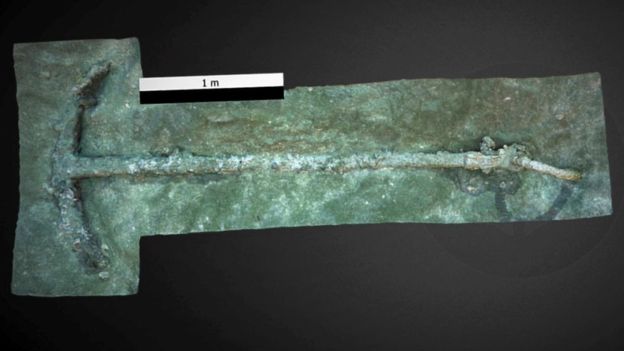Possible 16th-Century Spanish Anchors Found Near Mexico
The exact location where the anchors were found was when the Spanish Conquistador Hernan Cortes was sinking his ships in order to prevent a return to Cuba by opposing the leaders of his army.
Anchor studies have shown that their morphology places the anchors to the 16th century. Their orientation indicates that they follow patterns that could be associated with the location of the fleet of conquistador Hernan Cortes.
Villa Rica is usually rich in tourists and fishermen in the salty seawater.

The coast of Veracruz, however, was around 500 years ago one of history’s main cultural gatherings, which is now being investigated, with positive results, by underwater archaeologists of the National Institute of Anthropology and History (INAH), who work together with foreign specialists to explore the seabed.
The researchers have found two iron anchors in their new exploratory project, the second season of the Villa Rica Subaquatic Archeology Project
Curiously, the experts have revealed that the unique characteristics of the anchors link them to the 16th century. The objects join the discover of another anchor that was found in 2018.
Laboratory studies have proven that the wood of its stock belongs to a tree of Spain’s Cantabrian coast.
The recently recovered anchors were discovered no more than 300 meters north of the location where experts in 2018 recovered the first anchor. The largest of the anchors is 3.68 meters long and 1.55 meters wide. The second anchor is 2.6 meters long and 1.43 meters wide.
Unlike the anchors recovered in 2018, the recently found objects did not converse their wooden stock.
Nonetheless, the protuberances over the rod are visible where the stock would adjust.
“In both, a pair of bumps running parallel to the arms can be seen in the cane at the height at which the stocks adjusted, a typical feature of the manufacture of anchors in the 16th century,” the researchers revealed in a statement.
“It is not clear if all three anchors belong to the same historical moment, but their alignment to the southwest coincides with the logic of Villa Rica as a port that protects ships from the north and northwest winds,” explained Roberto Junco, head of the Underwater Archeology Branch of INAH.
Despite this uncertainty, for experts, it is of great importance to know they are following an accurate route to locate shipwrecks that are linked to the arrival of Europeans to the American continent.
“The Conquest of Mexico was a seminal event in human history, and these shipwrecks, if we can find them, will be symbols of the cultural collision that led to what is now the West, geopolitical and socially speaking,” says underwater archaeologist Dr. Frederick Hanselmann.
It is important to note that the anchors are well-preserved thanks to the same sediment that had protected them for five centuries. This is why after experts completed measurements and documentations, the anchors were once again covered in the sediment to be protected in situ.
Researchers will now focus on another 15 anomalies that show potential as being anchors.





